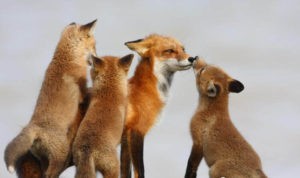You probably know this perennial Christmas favorite by heart. Although a song now, “The Twelve Days of Christmas” began as a memory game1 with various versions recited through the centuries. It’s thought to be of French origin even though it was first published as a tune in England in 1780. The melody we sing today was written in 1909. The lyrics refer to the twelve days between Christmas and Epiphany.2 Depending on how it’s being calculated, the days begin on Christmas Eve, Christmas Day, or the day after.
In addition to numerous energetic people in the song—pipers piping, lords-a-leaping, ladies dancing, and maids-a-milking—there are seven birds. Have you ever wondered what birds the songwriter(s) had in mind? Those who’ve made a study of this agree on most or all of the following birds. Bet you’ll find yourself humming along as you read!
On the first day of Christmas, my true love gave to me:
A partridge in a pear tree
Partridges are in the pheasant family and native to Europe, Asia, Africa, and the Middle East. The bird of the first lyric is likely one of two strong possibilities.
The first is the Red-legged Partridge, Alectoris rufa, sometimes called the French Partridge. They’re native to France, Spain, and Portugal and have been introduced into England and Wales. They breed on rocky ground and farmlands. They’ll fly short distances but prefer to run when alarmed.
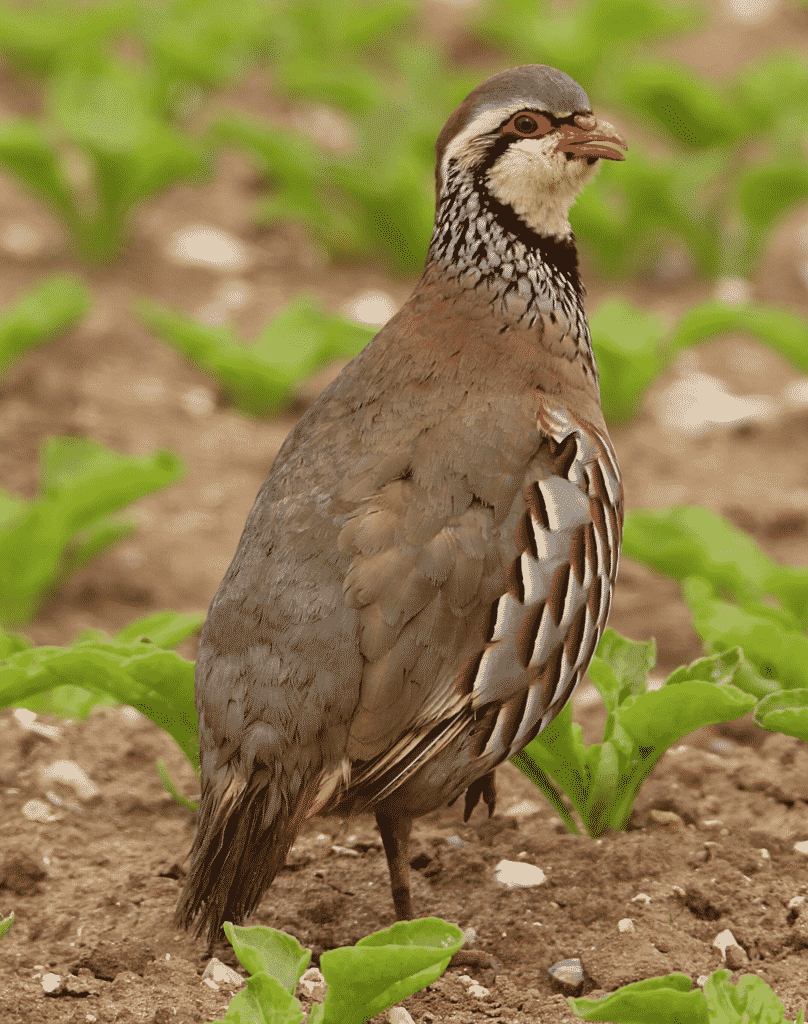
Red-legged Partridge, Alectoris rufa (Nick Goodrum / Flickr; CC BY 2.0)
The second most likely is the Gray Partridge, a traditional game bird of Europe and Asia. Introduced into flat agricultural areas along the border of the United States and Canada, they’re especially noted for their huge clutches—up to twenty-two eggs!
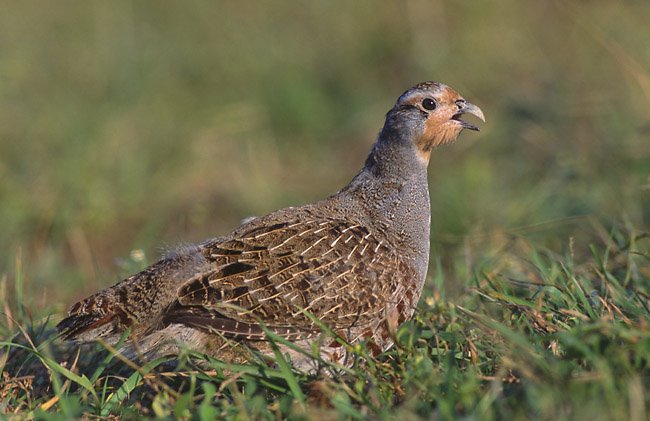
Gray Partridge, Perdix perdix (Marek Szczepanek / Wiki; CC BY-SA 3.0)
On the second day of Christmas, my true love gave to me:
Two turtle doves
The doves are probably European Turtle Doves, migrating birds of Europe, Turkey, and Africa. Dainty and timid, they live in open woodlands, occasionally visiting gardens. They’ve become symbols of devoted love because they form strong pair bonds. Their name comes from the song they sing, a vibrating, deep “turrrr.”
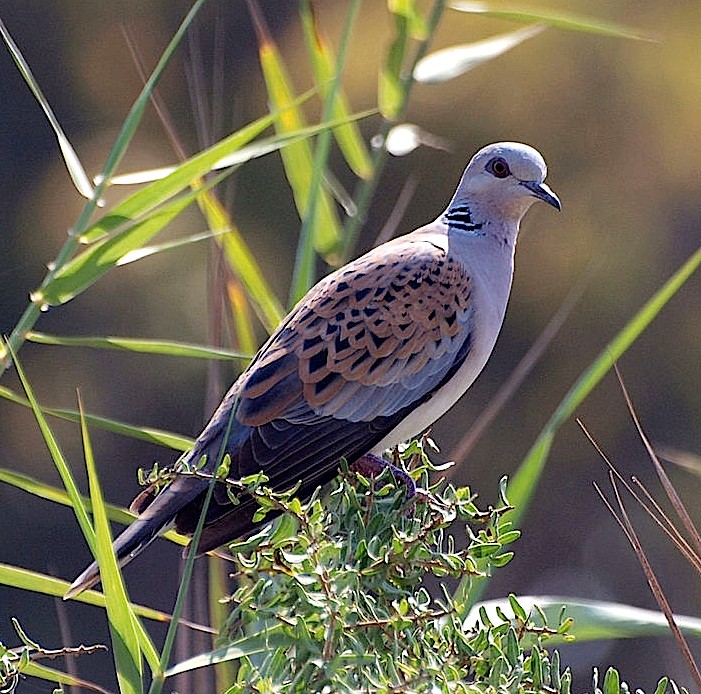
European Turtle Dove, Streptopelia turtur (Revital Salomon / Wiki; CC BY-SA 4.0)
On the third day of Christmas, my true love gave to me:
Three French hens
The hens are probably a species of fancy chicken native to France. There are three main possibilities, and they date back several centuries: The similar-looking Crèvecœur (kref-KURR) and the Houdan (oo-DAW), which are now raised mainly for show, and the La Flèche (La FLESH), a rare breed raised for show, and for meat in expensive French restaurants.

Mottled Houdan Chicken (© galitsin / Shutterstock)
On the fourth day of Christmas, my true love gave to me:
Four calling birds
The calling birds are “colly” birds in the song’s original version. Colly (or collie) is from “colliery,” an Old English word for coal mines. It was also used when referring to blackbirds, as in “black like coal.”
The colly bird is most likely the Common Blackbird, also called the Eurasian Blackbird, which wasn’t called a blackbird until 1486. Common Blackbirds have a musical song and are the national bird of Sweden. They inhabit Europe, Asia, Africa, Australia, and New Zealand.
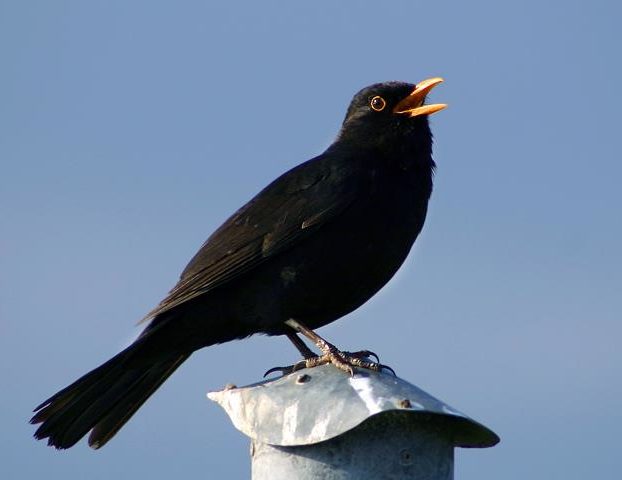
Common Blackbird, Turdus merula (Malene Thyssen / Wiki; CC BY-SA 2.5)
On the fifth day of Christmas, my true love gave to me:
Five golden rings
The rings are probably Ring-necked Pheasants. Native to China and East Asia, they’ve been introduced into other continents, including North America. They live on farmland, fields with brushy cover, in tall grasses, and along woodland borders. Males take “harems” of numerous females and aggressively defend them from rivals. They can fly but typically run for cover. It’s the state bird of South Dakota.

Ring-necked pheasant, Phasianus colchicus (Becky Matsubara / Flickr; CC BY 2.0)
On the sixth day of Christmas, my true love gave to me:
Six geese-a-laying
The Graylag Goose is the ancestor of all domesticated geese and the most likely candidate here. Wild populations inhabit wetlands in Europe, Asia, and China. Wild Graylag populations in the U.S. are domestic geese that escaped. The “lag” part of their name is said to refer to their lagging behind because they migrate later than other geese. Their call is a loud “honk.”
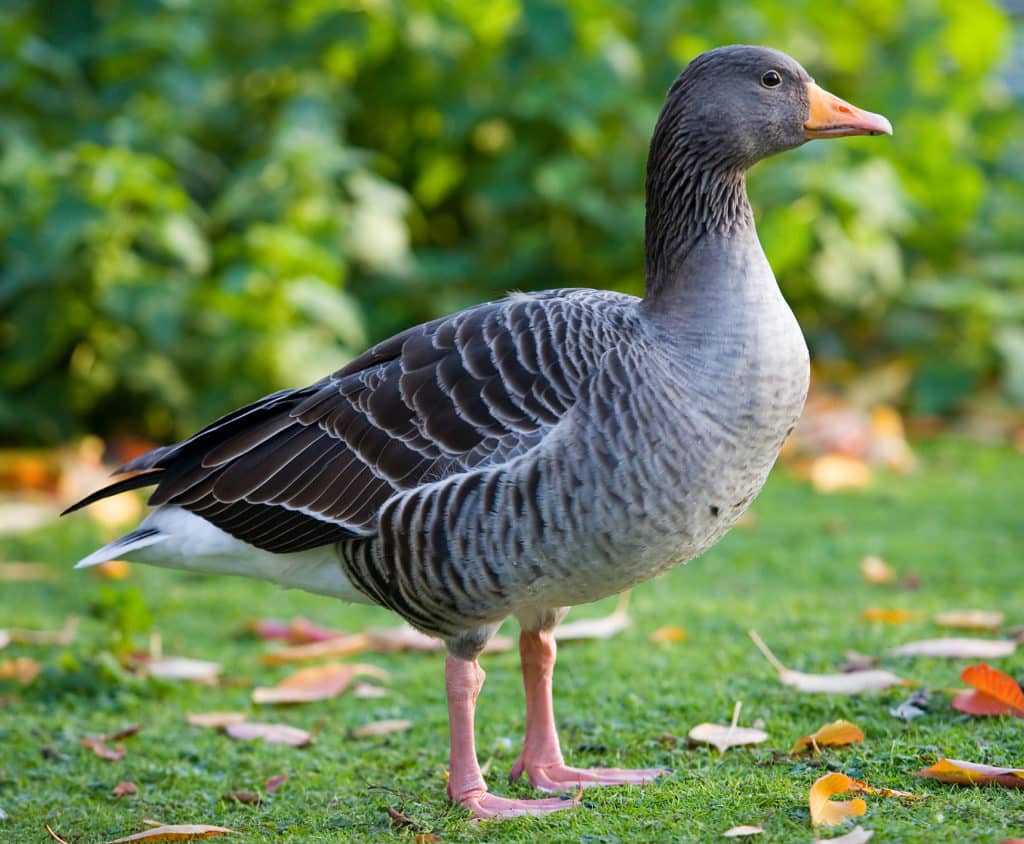
Greylag Goose, Anser anser (Diliff / Wiki; CC BY-SA 3.0)
On the seventh day of Christmas, my true love gave to me:
Seven swans a-swimming
Laws now protect the final bird in the song. But, swans once were a common meat at royal banquets, and the Mute Swan is likely this lyric’s dish. The largest birds in the world and native to Europe, they’ve been introduced into the U.S. They’re named “Mute” because they’re less vocal than other swans. When they curve their neck, it looks graceful and elegant to us, but it can also be a threat display. They are powerful birds that aggressively defend their nests. In the U.S., they out-compete the native Trumpeter Swan for food and are considered a threat in some areas.

Mute Swan, Cygnus olor (Dick Dunn / Wiki; CC BY-SA 3.0)
So, there you have it—a memorable song that acknowledges the importance of particular birds to people back in the 1700s and to this day is still sung at a particular time of the year!
1 Wikipedia: “…memories-and-forfeits” game, in which a leader recited a verse, each of the players repeated the verse, the leader added another verse, and so on until one of the players made a mistake, with the player who erred having to pay a penalty, such as offering up a kiss or a sweet.”
2 Epiphany is the Christian celebration of God manifesting as the baby Jesus.












